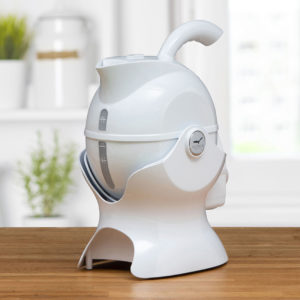Hand therapy is a specialised branch of occupational therapy that focuses on treating conditions affecting the upper extremities, particularly the hands and wrists. As occupational therapists, your goal is to empower patients to regain functionality in their hands, which are essential for performing daily tasks, work, and pursuing hobbies. In recent years, there have been significant advancements in hand therapy techniques, leading to improved outcomes for patients. Today, we’ll explore some of these exciting developments and how they benefit those in need of hand rehabilitation.
Incorporating Technology for Precise Assessment
One of the notable advancements is the use of technology in hand therapy assessments. High-resolution imaging techniques, such as ultrasound and 3D scanning, enable therapists to visualise the internal structures of the hand with remarkable detail. This precise assessment allows for more accurate diagnosis and tailored treatment plans.
Customised 3D-Printed Orthotics
3D printing has revolutionised the creation of custom orthotic devices for hand therapy. Therapists can design and fabricate splints and braces that perfectly fit a patient’s hand, ensuring optimal support and comfort during the rehabilitation process. This personalised approach promotes better adherence to treatment plans.
Virtual Reality (VR) Rehabilitation
Virtual reality has found its way into hand therapy. VR-based exercises and games make rehabilitation engaging and enjoyable for patients. These immersive experiences not only motivate patients but also provide valuable data for therapists to track progress.
Innovative Pain Management Techniques
Managing pain is a crucial aspect hand therapy. Recent developments include novel pain relief modalities such as cold laser therapy, which can reduce pain and inflammation without invasive procedures or medication. These techniques enhance the overall patient experience.
Evidence-Based Interventions
Hand therapists now have access to a wealth of evidence-based interventions and treatment protocols. These approaches are continuously refined through research, ensuring that patients receive the most effective and up-to-date therapies available.
Mind-Body Integration
Recognizing the interconnectedness of physical and mental well-being, some hand therapists are incorporating mindfulness and relaxation techniques into their practice. These methods can help patients manage stress and anxiety related to their hand conditions, facilitating the healing process.
Telehealth for Hand Therapy
The rise of telehealth services has made hand therapy more accessible to patients, especially those in remote or underserves areas. Through virtual consultations and remote monitoring, therapists can provide ongoing support and guidance to patients on their hand rehabilitation journey.
Advancements in hand therapy techniques are changing the landscape of rehabilitation for individuals with hand and wrist conditions. These innovations not only enhance the quality of care but also empower patients to take an active tole in their recovery.
As occupational therapists, it’s crucial to stay informed about these developments, integrate them into our practice and continue working towards improving the lives of those in need of hand therapy. The future hold even more promise for this field, with ongoing research and innovation posed to further transform the way we approach hand rehabilitation.
Know someone who could benefit from kitchen aids to help make everyday life easier? Click here now for more information.













Hello my name is Dorothy (Dot) I have osteoarthritis in my hands and fingers I live In south Australia my inquiry is about therapy for hands and fingers
Hi Dot,
How can we help?